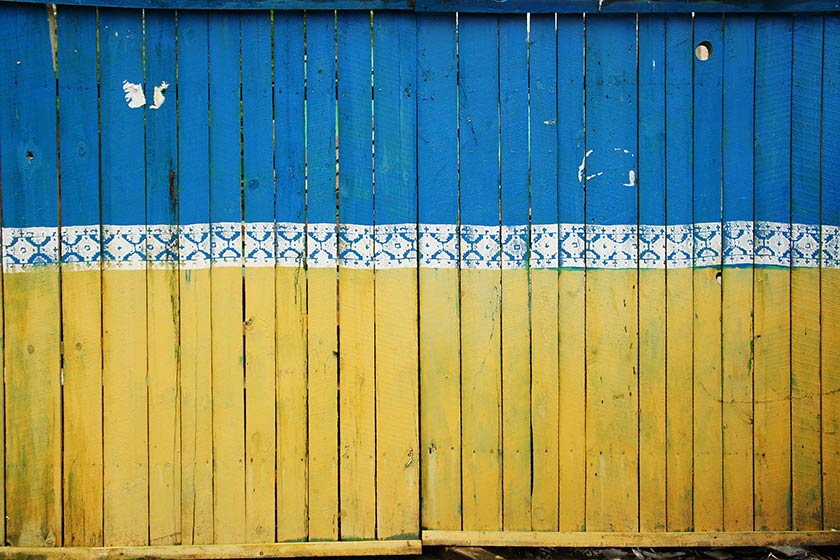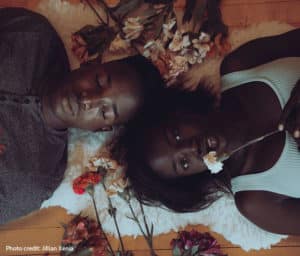Photography and Ukraine: From brides to battles in just weeks.
March 25th, 2022
What was a normal Google search entry for “photographers in Ukraine” just weeks ago is now very different. The list of results depicts a stark reality of the multi-faceted and unimaginable disposition of a nation under siege. Mixed with “top Ukrainian photographers you should follow” and the “best wedding photographers in Ukraine” are results about how photographers are documenting “destruction in Ukraine” and “the invasion of Kyiv.” Peripheral results impart the tragic, astounding and incomprehensible nature of “how could this happen in this day and age.”
Since news broke of the Ukraine invasion in late February, a vibrant, active European society has been tragically transformed from its citizens following photographers on social media and searching for wedding photographers, to jolting images of the ravages of war. Photos taken in Ukraine by journalists, professionals and anyone with a phone in recent weeks are now being seen around the world. But the subjects have shifted rapidly from brides and bouquets to battles and bombs.
Photography often portrays the joys of life and artistic views of the world. But the war in Ukraine shows another side, tells a different story. The Zenfolio and Format team is shocked by the tragedy and horror the people of Ukraine are experiencing right now. We empathize with the plight of those who fled their homes and those who stayed to fight. This article is intended to focus on the role of photography in this war, as well as in past conflicts. Now that war photography is no longer the sole domain of journalists and professionals, we honor all photographers – no matter what camera they use – who capture the images that tell these stories to the world.
War photography – born in Ukraine.
It is ominous and ironic that one of the first documented war photographers was Roger Fenton, a British photographer and a founding member of the Royal Photographic Society, who was sent to southern Ukraine in 1855 to document the Crimean War. Fenton’s images captured the tensions of war rather than action, and he is considered a pioneer of war photography.
Ernest Brooks famously photographed World War One. Robert Capa and Margaret Bourke-White perilously documented World War Two. Nick Ut received a Pulitzer Prize for his photo showing a young girl running from a napalm attack in the Vietnam War.
Since the invention of photography, the world now sees the emotion, determination and destruction of war instead of merely reading or hearing about it. Iconic war images have made indelible impressions on culture, such as Raising the Flag on Iwo Jima, photographed by Joe Rosenthal. In today’s Ukraine, Maxim Dondyuk is photographing his nation under siege in order to achieve a greater purpose.
Featured in a current edition of Time magazine, Dondyuk’s startling images depict a range of carnage, pain and resolve in a captivating photo essay. As Dondyuk relates, his intent is to record the events of recent weeks in order to save his country, hoping that Russian citizens see his photos. He trusts that a photo has the ability to change people and change societies.
Instagram and instant war reporting.
Prior to this century, where virtually everybody now has a camera in their hand, images capturing armed conflicts were most often chronicled by photojournalists, photo professionals, and a few dedicated amateurs. The camera phone changed all that.
The Ukraine War isn’t the first clash to involve mobile phones and social media, but it might be the most immediate thus far. Facebook and Twitter have been employed to organize and escalate protests into battles, as in the Arab Spring uprisings that began in 2010. Yet, the immediacy of the first missiles falling in Ukraine on February 24th were posted from camera phones on TikTok and Instagram at virtually the moment it happened.
This technologic evolution of the apparatus for documenting the images of war has now progressed from the large, unwieldy equipment transported into Crimea by Robert Fenton in 1855, to film cameras during the great wars, to palm-sized devices capable of high-quality instant still and video images today. Reporting of facts on the ground and conveyance of deep emotions has now accelerated from weeks, to days, to seconds. Now anybody in proximity, with the will to do so, can be a bona fide war photographer.
The camera never lies…or does it?
The advent of photographers everywhere in a war zone has led to another challenge – what’s real and what’s not. Along with the advanced digital technology to record an image, also came the ability to manipulate an image many degrees afar from its original form. This “revisionist history” can serve the purpose of propaganda and the dissemination of disinformation to either prop-up or break will.
Besides extreme photo reengineering to accomplish a political purpose, another image illusion can be achieved from recycling photos from previous offensives and adding new captions relating to the current conflict. With images and video clips coming in from everywhere, fact-checking and establishing reputability are more important than ever.
A recent article in Forbes provides guidance for determining whether photos are real or fake. The steps include checking sources, relying on lists of credible photographers compiled by news organizations, and reverse image searching to verify authenticity. Along with Twitter posts from those truly in the heart of the battlefield, sadly, others with nefarious intent are also posting on social media.
Photography with the power to change people.
Even before the ubiquitous digital age of photography, powerful images were captured by both pro and amateur photographers during times of war and peace. Graphic images of the Normandy invasion on D-Day revealed the sacrifices of soldiers in a pivotal battle. The Zapruder film has been scrutinized for decades in an attempt to solve the assassination of JFK at the precipice of US involvement in Vietnam.
Today, the ability to capture iconic photos is prolific. Technology has opened this capability to the masses. In decades past, war photographers were on assignment…now that coverage is in the hands of every person who is on location and informing the world. Photography pros and journalists have the expertise and discernment to capture images that convey a story and guide a narrative. Photo amateurs and regular citizens now have the opportunity to take iconic photos due to their proximity, situation and ability to publish in an instant.
While the war in Ukraine wages on, the photography that depicts and defines the hostilities are being taken daily by amateurs and pros, by journalists and TikTokkers. Surely one of these images will have the power to change people, change society.



